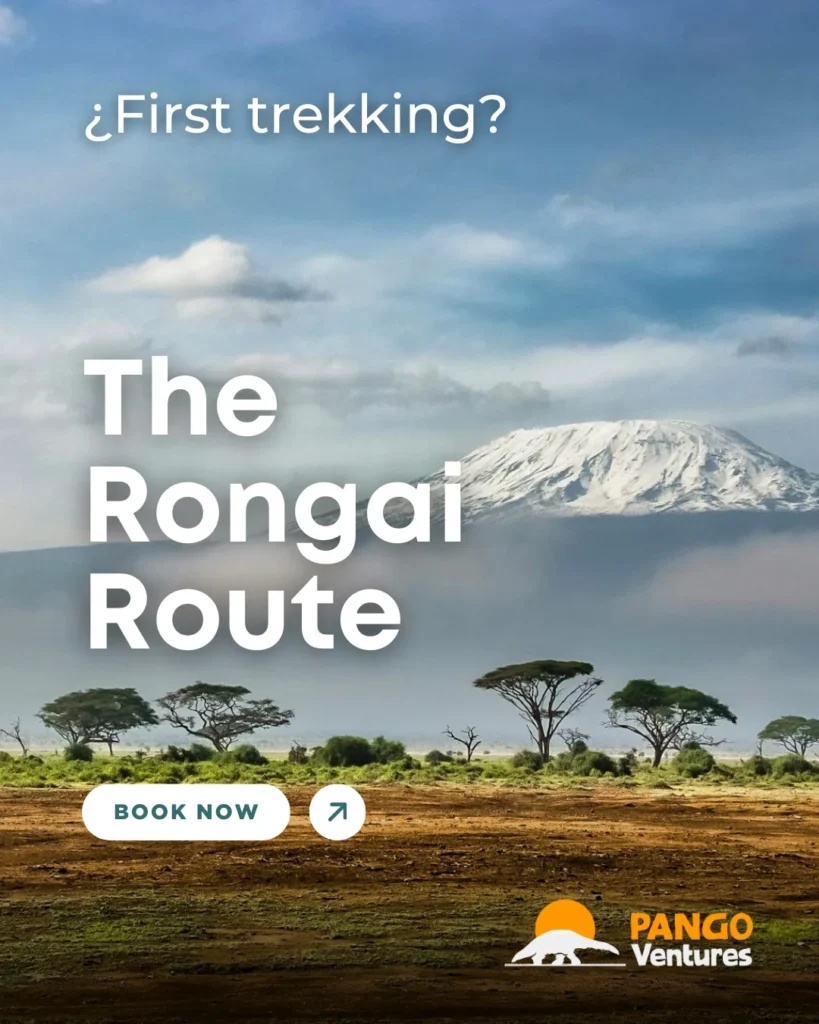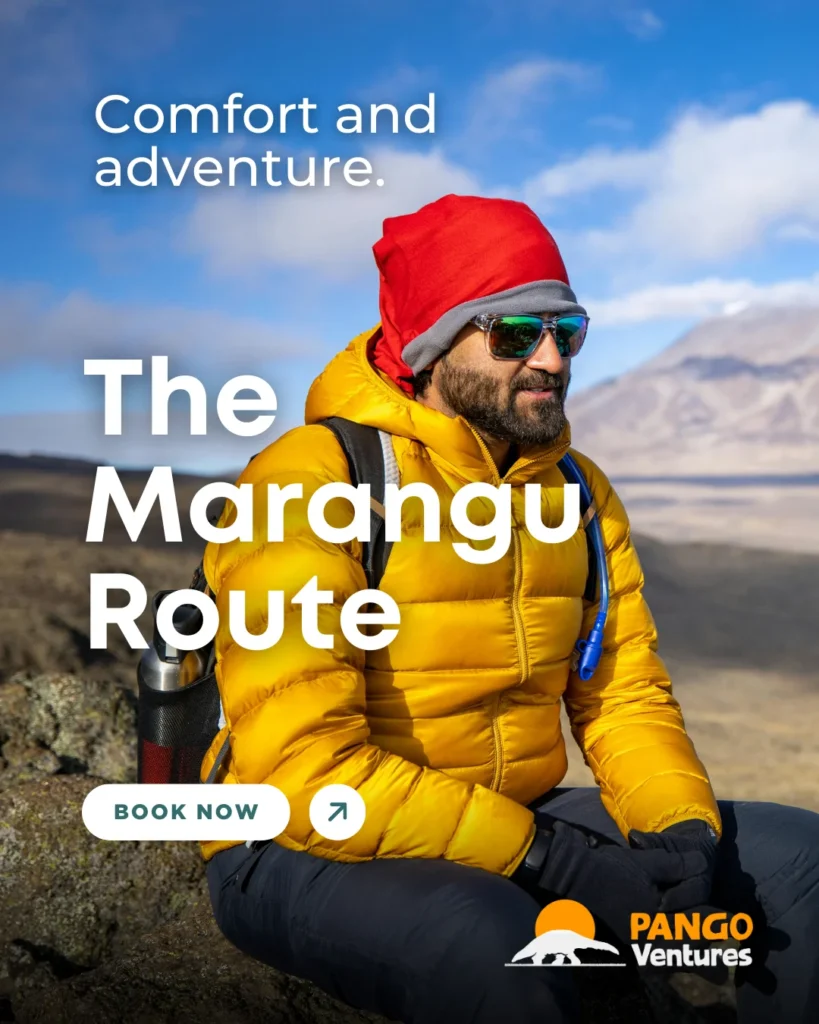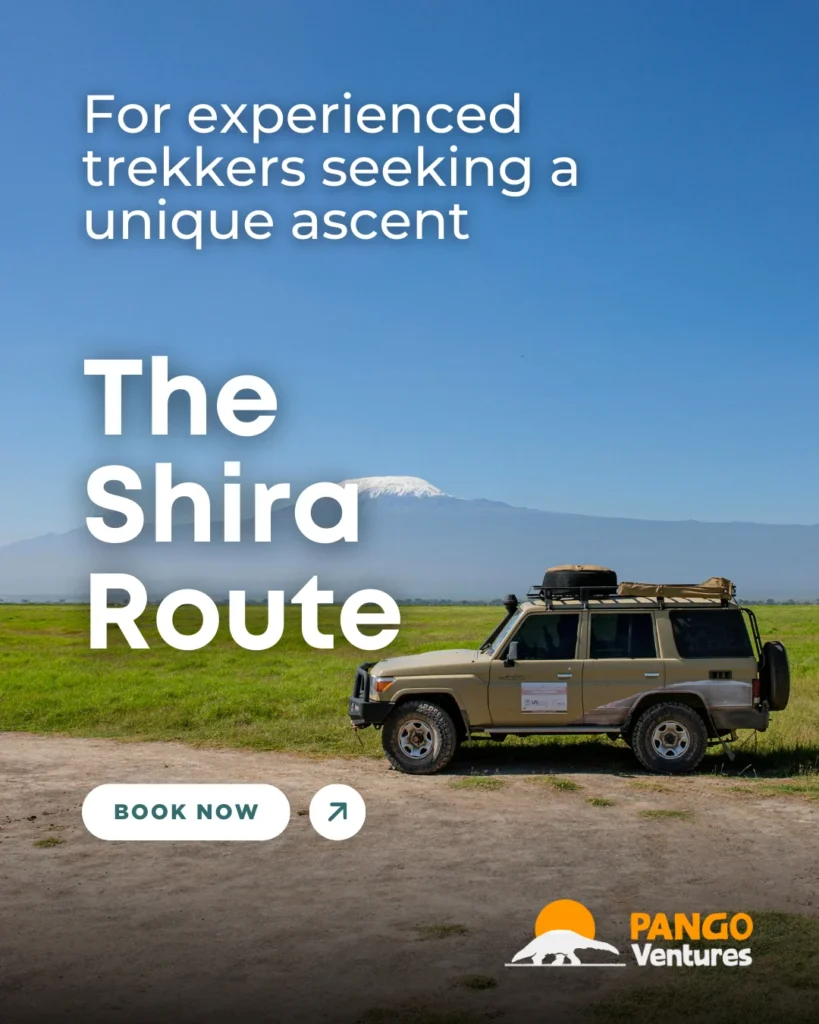The Lemosho Route in Kilimanjaro
Where you'll be

Embark on the ultimate adventure with our 8-day Lemosho Route trek, one of Kilimanjaro’s most scenic and rewarding climbs. Starting in the lush rainforest, you’ll journey through diverse landscapes—moors, lava towers, and stunning alpine deserts—before conquering the summit of Uhuru Peak, the highest point in Africa.
This extended trek offers gradual acclimatization and includes thrilling highlights like scaling the Barranco Wall and exploring the vast Shira Plateau. The Lemosho Route is perfect for adventurers seeking an unforgettable experience with stunning views, a higher success rate, and plenty of time to soak in Kilimanjaro’s natural beauty.
Ready to take on the challenge and stand on the roof of Africa? Let’s make it happen!
8 days | ~6 km (~4 miles) | Once-in-a-lifetime experience
Cancellation flexibility
What you'll do
Day 1: Londorossi Gate to Mti Mkubwa (Big Tree) Camp
- Elevation 2,100m (6,890ft) to 2,780m (9,120ft)
- Distance: ~6 km (~4 miles)
- Hiking Time: 3-4 hours
After registering at Londorossi Gate, you’ll drive to the trailhead and start trekking through dense rainforest. This first day is a relatively short hike to Mti Mkubwa, or Big Tree Camp.
Day 2: Mti Mkubwa to Shira 1 Camp
- Elevation: 2,780m (9,120ft) to 3,500m (11,500ft)
- Distance: ~8 km (~5 miles)
- Hiking Time: 5-6 hours
As you leave the rainforest behind, the trail ascends into the moorland zone. You’ll have panoramic views of the Shira Plateau as you trek towards Shira 1 Camp.
Day 3: Shira 1 Camp to Shira 2 Camp
- Elevation: 3,500m (11,500ft) to 3,850m (12,600ft)
- Distance: ~7 km (~4.3 miles)
- Hiking Time: 4-5 hours
This day’s trek is relatively short and gentle, allowing you to further acclimatize. You’ll explore the vast Shira Plateau with great views of Kibo Peak. Shira 2 Camp is a bit higher in elevation, giving you time to adjust to the altitude.
Day 4: Shira 2 to Lava Tower to Barranco Camp
- Elevation: 3,850m (12,600ft) to 4,630m (15,190ft) to 3,960m (13,000ft)
- Distance: ~10 km (~6.2 miles)
- Hiking Time: 7-8 hours
- This is an acclimatization day, where you’ll hike to Lava Tower at 4,630m before descending to Barranco Camp. This “climb high, sleep low” approach helps with altitude adjustment. Barranco Camp sits at the base of the impressive Barranco Wall.
Day 5: Barranco Camp to Karanga Camp
- Elevation: 3,960m (13,000ft) to 4,035m (13,250ft)
- Distance: ~5 km (~3.1 miles)
- Hiking Time: 4-5 hours
You’ll tackle the Barranco Wall, a steep but non-technical climb. After the wall, the trail becomes easier as you traverse valleys before reaching Karanga Camp.
Day 6: Karanga Camp to Barafu Camp
- Elevation: 4,035m (13,250ft) to 4,640m (15,230ft)
- Distance: ~4 km (~2.5 miles)
- Hiking Time: 3-4 hours
This is a shorter day with a steep ascent to Barafu Camp, where you’ll rest and prepare for the summit push. Barafu Camp offers stunning views of the peak and the surrounding landscape.
Day 7: Barafu Camp to Summit (Uhuru Peak) and down to Mweka Camp
- Elevation: 4,640m (15,230ft) to 5,895m (19,341ft) to 3,100m (10,170ft)
- Distance: ~17 km (~10.5 miles)
- Hiking Time: 11-14 hours
You’ll start the final ascent around midnight, aiming to reach the summit by sunrise. After summiting Uhuru Peak, the highest point in Africa, you’ll descend back to Barafu Camp for a brief rest, then continue down to Mweka Camp for the night.
Day 8: Mweka Camp to Mweka Gate
- Elevation: 3,100m (10,170ft) to 1,640m (5,380ft)
- Distance: ~10 km (~6.2 miles)
- Hiking Time: 3-4 hours
This is a relatively easy day as you descend through the rainforest to Mweka Gate. At the gate, you’ll collect your certificates and be driven back to your hotel.
All of our guides are experts and locals
Things to know
Acclimatization is Key: The 8-day Lemosho Route offers a gradual ascent, allowing more time for acclimatization, which increases your chances of successfully reaching the summit. However, altitude sickness is still a risk, so pay attention to your body and stay hydrated.
Physical Fitness: While the Lemosho Route is known for its scenic beauty, it is also challenging. A good level of fitness is required, especially for the summit day, which includes a long trek to Uhuru Peak and a significant descent.
Diverse Weather Conditions: You’ll encounter a wide range of climates, from the humid rainforest to freezing temperatures at the summit. Prepare for varying weather conditions by bringing layers of clothing, a good quality sleeping bag, and sturdy boots.
Camping Accommodations: Unlike the Marangu Route, which offers huts, the Lemosho Route is entirely camping-based. You’ll sleep in tents at designated campsites, so be prepared for outdoor living during your trek.
Pack Light, but Smart: Porters will carry most of your gear, but you’ll need a daypack for essentials like water, snacks, a camera, and extra layers. Stick to the packing guidelines to ensure comfort and safety.
Summit Night is Tough: The summit attempt starts at midnight on Day 7 and involves a steep, slow ascent. Be prepared mentally and physically for this strenuous part of the trek, as it’s often the most challenging.
Bring Enough Water and Snacks: Stay hydrated and fueled throughout the trek. Your team will provide water, but you’ll need a reusable bottle or hydration system to carry it. Energy-boosting snacks can help during tough sections.
Wildlife and Scenic Beauty: The Lemosho Route is known for its remote beauty and fewer crowds. You may encounter wildlife in the rainforest and enjoy some of the most breathtaking vistas Kilimanjaro has to offer.
Guides and Porters: You’ll be accompanied by experienced guides and porters who will ensure your safety and comfort throughout the journey. Tipping them at the end of the trek is customary.
Sustainable Trekking: Pango Ventures is committed to responsible and sustainable trekking practices. Your journey helps support local communities and conservation efforts, ensuring that future generations can enjoy Kilimanjaro’s beauty.




